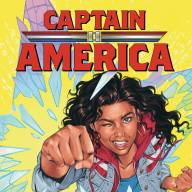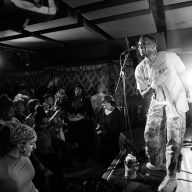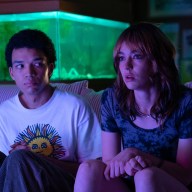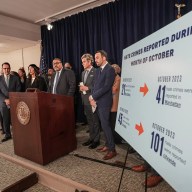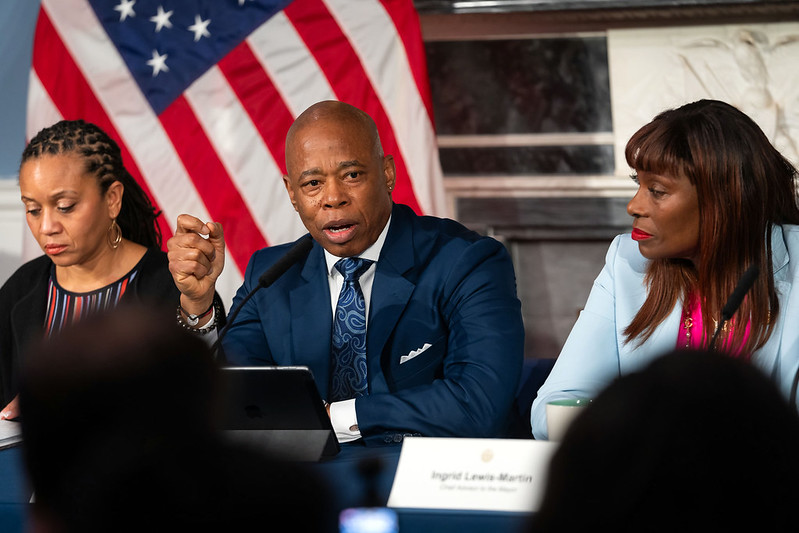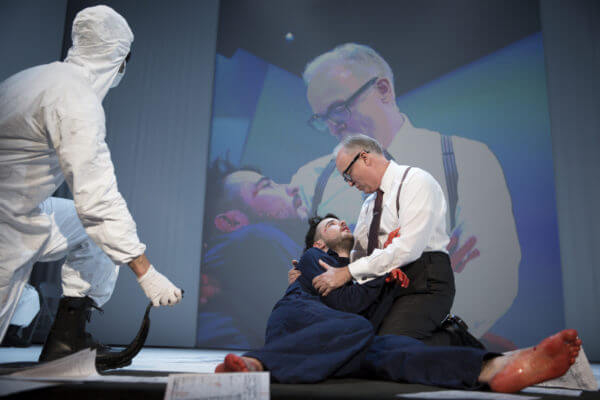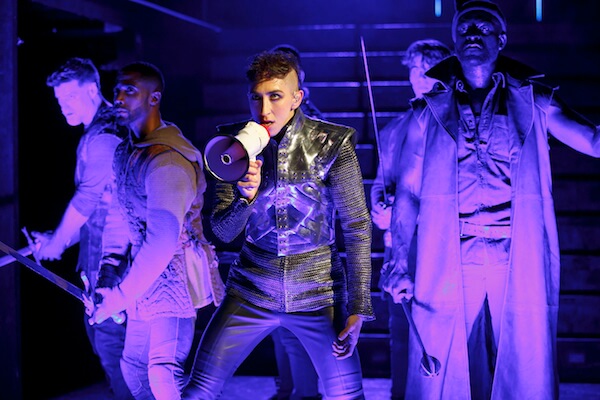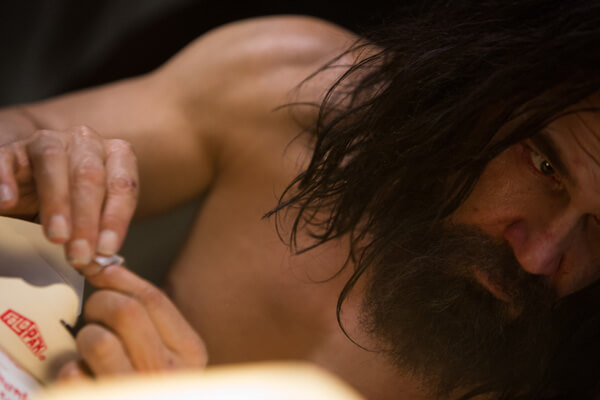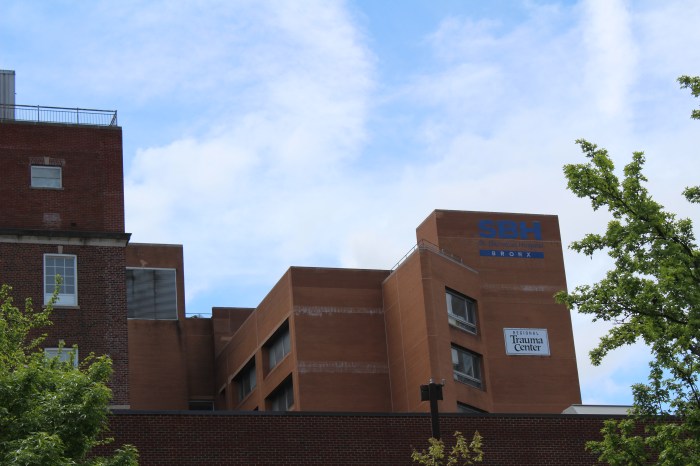“David Byrne’s American Utopia” has some enormous shoes to fill. A de facto sequel to Talking Heads’ 1984 concert film “Stop Making Sense,” directed by Jonathan Demme, it’s based on Byrne’s Broadway performances, which ended this past February. Spike Lee proves to be a showier director than Demme was.
Now 68, Byrne is self-consciously establishing a legacy beyond Talking Heads. The set list for “American Utopia” mixes that band’s songs with his solo material. The film plays “Everybody’s Coming To My House,” which landed him a rock radio hit in 2018 after decades of absence, in his version as well as a high school choir’s.
Byrne speaks onstage about the difference between the two. Despite the lyrics, his voice can’t help sounding slightly prickly and agitated, as though he’s striking up the courage to remain at a party. The teen choir sounds like they really do want everyone to come to their house, offering a warm embrace. Byrne also mentions that he’s an immigrant — his parents brought him to the US from Scotland as an infant — and so are many of his band members. After that intro, the meaning of “everybody” and “my house” then seems much broader.
Without being a narrative film, “Stop Making Sense” told a story. It began with Byrne performing “Psycho Killer” alone. Talking Heads bassist Tina Weymouth then joined him for the next song. The band quickly ballooned to their expanded, multi-racial touring lineup. The anxiety behind Byrne’s voice and lyrics always made Talking Heads sound different from earlier white musicians inspired by soul and funk. Mick Jagger, Rod Stewart, and Robert Plant lifted from Black music because they thought it made them sexier. Byrne sounded much more vulnerable, like he was on a quest to find a solution to his angst instead.
One reason “American Utopia” feels like a slightly weaker sibling to “Stop Making Sense” is that it copies much of its set list from Talking Heads songs, while the material from Byrne’s solo career doesn’t match the exhilaration of “Once in a Lifetime,” “Burning Down the House,” or “Road to Nowhere.” But it benefits from the fact that many of these songs are now well-worn palimpsests. For example, the original clip for “Once in a Lifetime” presented Byrne as a nerdy businessman, awkwardly dancing over primitive video effects. His performance of the song in “Stop Making Sense” expanded on the song with a greater sense of theatricality, but still involved him donning glasses and an oversized white suit. The song’s roots in Byrne and Brian Eno’s days watching televangelists are clearer in the “American Utopia” version, where the lyrics come across like a sermon.
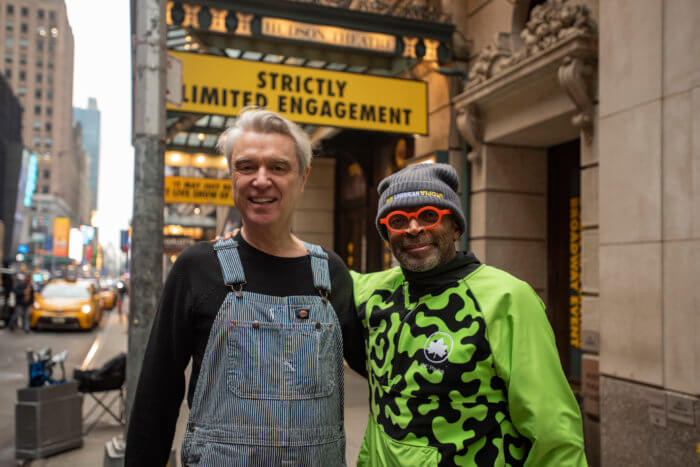
Lee uses the whole space of the Hudson Theatre, where “American Utopia” was performed. The film uses overhead shots, revealing that the whole band performed barefoot. His films have long incorporated music as a structural device more sensitively than most directors. He made a musical, “School Daze,” as his second feature out of film school. Where would “Do the Right Thing” be without Public Enemy’s “Fight the Power?” The first Spike Lee joint of 2020, “Da 5 Bloods,” relied on an atypically weak Terence Blanchard score but played Marvin Gaye’s album “What’s Goin’ On” (often in a capella versions) over images of his characters’ Vietnam experiences to great effect. This is Lee’s seventh film based on a stage performance.
“American Utopia” is more overtly political than “Stop Making Sense,” with a cover of pansexual singer Janelle Monae’s protest song about racist police violence “Hell You Talmbout” and Byrne’s own anti-gun violence “Bullet.” Still, filmmaker and critic Scout Tafoya put “Stop Making Sense” on a list of socialist movies. While that makes sense, the limits of the movie’s political vision are suggested by the fact that Talking Heads went back to their original lineup of four white people for “Little Creatures,” their next studio album. Byrne takes pains to introduce his band members to the audience. He even has them start “Born Under Punches (The Heat Goes On)” by playing each instrument to prove that the show isn’t using backing tapes.
As much as “American Utopia” suggests a collective vision, however, Byrne is still the star, down to having his name in the full title.
The film’s ending opens things up. “Road to Nowhere” is Byrne’s finale. It begins with him and his band singing a capella in a circle, lit from underneath. To fit the marching-band beat, they dance in a circle onstage while playing it, and then head into the audience to finish the song. Byrne gets on a bike to ride home after the performance ends, but the film isn’t over. The closing credits depict the entire band riding bikes through Manhattan, as the choral version of “Everybody’s Coming to My House” plays.
Byrne describes “Road to Nowhere” as “a resigned, even joyful vision of doom.” But if its lyrics are skeptical about the future, the arrangement is excited. Yet the sheer joy of performance comes through most of all, despite a much stronger suspicion now than in 1984 that we’re racing down a road to nowhere.
DAVID BYRNE’S AMERICAN UTOPIA | Directed by Spike Lee | Airs on HBO, starts streaming on HBO Max Oct. 17
To sign up for the Gay City News email newsletter, visit gaycitynews.com/newsletter.


